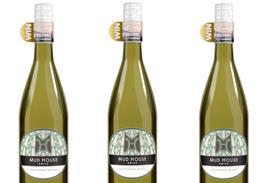First the good news: the total annualised circulations of UK consumer magazines increased by 123m copies in the first half of 2008, a 8.7% year-on-year rise.
And now the bad: that figure includes customer magazines and free and bulk copies, the ones that don’t go through the tills at the nation’s newsagents and convenience stores. Actively purchased magazine sales volumes actually fell by 3.4% over the period, with total consumer expenditure on the category staying much the same as last year at £1.64bn.
In truth it’s customer magazines which dominate the distribution table, as revealed in the Audit Bureau of Circulation (ABC) figures for the six months to June. Seven out of the top 10 come from the sector, including three Sky titles, which between them run to over 15m copies.
Asda Magazine and Tesco Magazine also saw increases in circulation of 3.6% and 0.4% respectively.
None of this is of much comfort to those who make their living from the news stand, and nor is the rise of free circulation titles, as it starts to squeeze the pips of the profit-earners. Freebie music monthly The Fly is one such, climbing 11.1% and moving to within 10,000 copies of the category leader Q, which saw its usually reliable readership slip by 13.1%.
The rise of the non-news trade titles is most noticeable among men’s magazines, where the biggest circulation is recorded by the free Shortlist, a 2007 launch which has sustained distribution of over 450,000 copies, while paid-fors such as Zoo, Nuts, Loaded and Maxim have all continued to decline. The category also leads in being the most guilty of self-cannibalisation, as publishers extend their brands with online platforms which take readers away from the print versions. Nuts, for example, has seen a 9.8% year-on-year fall in its print version, but a 121% online increase for Nuts.co.uk.
In the overall listings, TV Choice registered a slight rise, retaining its position as the UK’s top selling magazine with an actively purchased circulation increase of 0.2%, while rival What’s on TV dropped away 5.4% on the year. Among the 10 national top sellers, those showing most promise were Saga, up 2%, and Glamour, up 4.8% year-on-year. Notable climbers outside the top 10 were Top of the Pops, increasing 26.6%, All About Soap, up 19.9%, Slimming World, up 10.9% and Psychologies, up 9.7% year-on-year.
Celebrity and gossip titles seem to have run into tough times of late. Again, it’s online competition that’s doing the damage, although some sources have claimed that too many scurrilous stories have led to a ‘trash backlash’ and that declining interest in Big Brother has cost them dear. OK! bucked the downward trend, registering a 9% year-on-year increase as the leading weekly celebrity magazine, saying a firm “Goodbye!” to its arch-rival Hello! which managed a 1.7% increase.
Publishers were in the main upbeat about the ABC figures, although in many cases they appeared to rate a title as a success if its circulation had declined less than its competitors. Some put forward the suggestion that magazines represent an inexpensive luxury which will become more popular as household purse strings tighten, and one went as far as to claim that reasonable results among children’s magazines mean a promising seam of new readers has opened up.
Phil Cutts, of publishers’ association PPA, admits the market is currently challenging but feels that magazines have managed to retain their overall stability.
“The latest ABCs show a flat market, but also growth for a good number of titles and a continuing increase in circulation.
The monthly market has upped its game, resulting in a stable six months for this sector,” he says. “There are winners and losers in virtually every area, but it’s encouraging to see successes across a variety of sectors and platforms.”
But it’s that word – platforms – which will concern newsagents. The move from titles to brands is a constant theme of publishers’ assessments of their own ABC performance, and that doesn’t bode well for the long-term future of the paper product. IPC chief executive Sylvia Auton praised the performance of online variants www.goodtoknow.co.uk and www.look.co.uk and stressed “IPC’s commitment to our strategy of strong multi-platform growth.” And Robert Price, chief executive of Future UK, in pointing out good results by the company’s video games and photography titles, adds: “When you combine these figures with the millions of users we’re now attracting to our websites, and the hundreds of thousands of people attending our live events, we’re reaching more of our target market than ever before.”
Such trends may well reveal the way forward for publishers. But unfortunately the news stand is destined to play an ever-smaller role in achieving market goals.
And now the bad: that figure includes customer magazines and free and bulk copies, the ones that don’t go through the tills at the nation’s newsagents and convenience stores. Actively purchased magazine sales volumes actually fell by 3.4% over the period, with total consumer expenditure on the category staying much the same as last year at £1.64bn.
In truth it’s customer magazines which dominate the distribution table, as revealed in the Audit Bureau of Circulation (ABC) figures for the six months to June. Seven out of the top 10 come from the sector, including three Sky titles, which between them run to over 15m copies.
Asda Magazine and Tesco Magazine also saw increases in circulation of 3.6% and 0.4% respectively.
None of this is of much comfort to those who make their living from the news stand, and nor is the rise of free circulation titles, as it starts to squeeze the pips of the profit-earners. Freebie music monthly The Fly is one such, climbing 11.1% and moving to within 10,000 copies of the category leader Q, which saw its usually reliable readership slip by 13.1%.
The rise of the non-news trade titles is most noticeable among men’s magazines, where the biggest circulation is recorded by the free Shortlist, a 2007 launch which has sustained distribution of over 450,000 copies, while paid-fors such as Zoo, Nuts, Loaded and Maxim have all continued to decline. The category also leads in being the most guilty of self-cannibalisation, as publishers extend their brands with online platforms which take readers away from the print versions. Nuts, for example, has seen a 9.8% year-on-year fall in its print version, but a 121% online increase for Nuts.co.uk.
In the overall listings, TV Choice registered a slight rise, retaining its position as the UK’s top selling magazine with an actively purchased circulation increase of 0.2%, while rival What’s on TV dropped away 5.4% on the year. Among the 10 national top sellers, those showing most promise were Saga, up 2%, and Glamour, up 4.8% year-on-year. Notable climbers outside the top 10 were Top of the Pops, increasing 26.6%, All About Soap, up 19.9%, Slimming World, up 10.9% and Psychologies, up 9.7% year-on-year.
Celebrity and gossip titles seem to have run into tough times of late. Again, it’s online competition that’s doing the damage, although some sources have claimed that too many scurrilous stories have led to a ‘trash backlash’ and that declining interest in Big Brother has cost them dear. OK! bucked the downward trend, registering a 9% year-on-year increase as the leading weekly celebrity magazine, saying a firm “Goodbye!” to its arch-rival Hello! which managed a 1.7% increase.
Publishers were in the main upbeat about the ABC figures, although in many cases they appeared to rate a title as a success if its circulation had declined less than its competitors. Some put forward the suggestion that magazines represent an inexpensive luxury which will become more popular as household purse strings tighten, and one went as far as to claim that reasonable results among children’s magazines mean a promising seam of new readers has opened up.
Phil Cutts, of publishers’ association PPA, admits the market is currently challenging but feels that magazines have managed to retain their overall stability.
“The latest ABCs show a flat market, but also growth for a good number of titles and a continuing increase in circulation.
The monthly market has upped its game, resulting in a stable six months for this sector,” he says. “There are winners and losers in virtually every area, but it’s encouraging to see successes across a variety of sectors and platforms.”
But it’s that word – platforms – which will concern newsagents. The move from titles to brands is a constant theme of publishers’ assessments of their own ABC performance, and that doesn’t bode well for the long-term future of the paper product. IPC chief executive Sylvia Auton praised the performance of online variants www.goodtoknow.co.uk and www.look.co.uk and stressed “IPC’s commitment to our strategy of strong multi-platform growth.” And Robert Price, chief executive of Future UK, in pointing out good results by the company’s video games and photography titles, adds: “When you combine these figures with the millions of users we’re now attracting to our websites, and the hundreds of thousands of people attending our live events, we’re reaching more of our target market than ever before.”
Such trends may well reveal the way forward for publishers. But unfortunately the news stand is destined to play an ever-smaller role in achieving market goals.















No comments yet